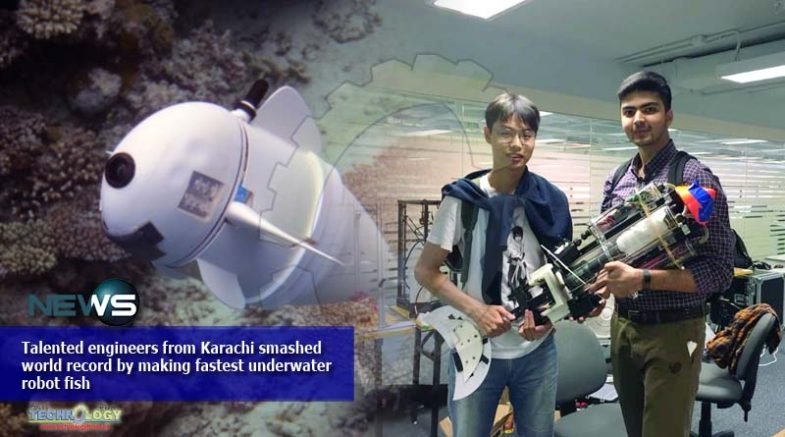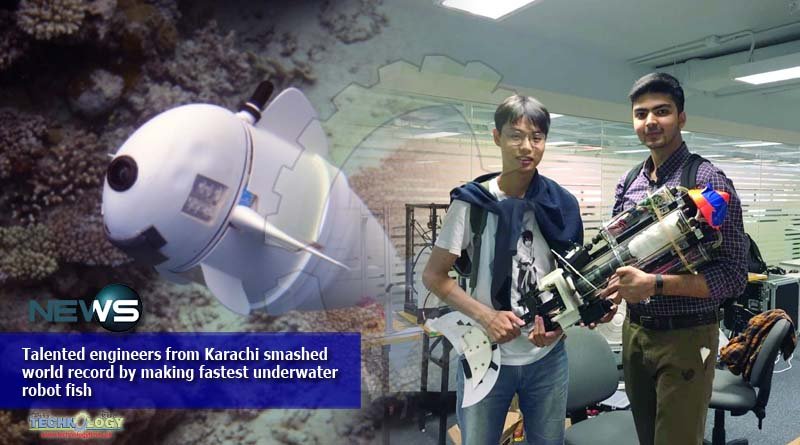Muhammad Saad Shahid Anwel and his team has smashed a world record by making with his team the fastest underwater robot fish which is a replica of a fish that is able to zip through oceans, opening doors to new modes of research and climate action.
 Muhammad Saad Shahid Anwel was a student of Beacon house School System in Karachi. He and his team were awarded a gold medal for creating a robotic car fit to roll on Mars’ rocky surface few years back.
Muhammad Saad Shahid Anwel was a student of Beacon house School System in Karachi. He and his team were awarded a gold medal for creating a robotic car fit to roll on Mars’ rocky surface few years back.
Still in his young age, he would design a curriculum based on the Science, Technology, Engineering and Mathematics education system commonly called STEM for A’ Level students at his school. The curriculum was designed so that the many students, to whom it was taught, following in Anwel’s footsteps, went into the field of robotics and were widely appreciated for their work by the industry experts.
He was offered a scholarship at the University of Hong Kong on the basis of his impressive academic record from where he graduated with a degree in computer engineering. This is where his journey to breaking a world record began.
He actively participated in numerous such projects and got an opportunity to join a team, working on creating a robot fish named Vayu, as a computer engineer.
Previously, teams from different batches preceding that of Anwel’s had worked on the project but it was Anwel and his team that upgraded it so that they broke a Guinness World Record on January 23, 2020, held by the Massachusetts Institute of Technology. The robot fish was now the fastest underwater bot.
Muhammad Saad Shahid Anwel talked about the details of underwater robot fish that Vayu moves using mechanical fins, which work differently than propellers, preventing it from getting entangled in underwater plants. Operating on a lithium-ion battery and able to stay underwater for eight to 12 hours, it can swim 50 metres in just 26.79 seconds. But speed is not its only merit.
He further said that it is one of the best means for underwater surveillance and environmental study.
He added that “It can be used for studying the effects of environmental pollution, conducting research on marine life and underwater surveillance”.
He told that the robot could also be used for identifying problems in dysfunctional vessels, helping with their repair and eventually benefiting the shipping industry.
Muhammad Saad Shahid Anwel informed about his future plans that aims to further improve the functionality of the robot fish by installing sensors which can increase its efficiency.
He also looks forward to doing a PhD in computer science, with a focus on swarm robotics which is an approach to designing multiple robots that work in a coordinated and decentralised way by using artificial intelligence and with the least possible human interference.
He wants to put his experience, skills and learning to the benefit of Pakistan, promoting technology in the country after gaining experience of working at various renowned companies in the field.
He believed that technology can be used to combat marine pollution and climate change in Pakistan, besides using robots to make advancements in the fields of agriculture, manufacturing, logistics and healthcare.
